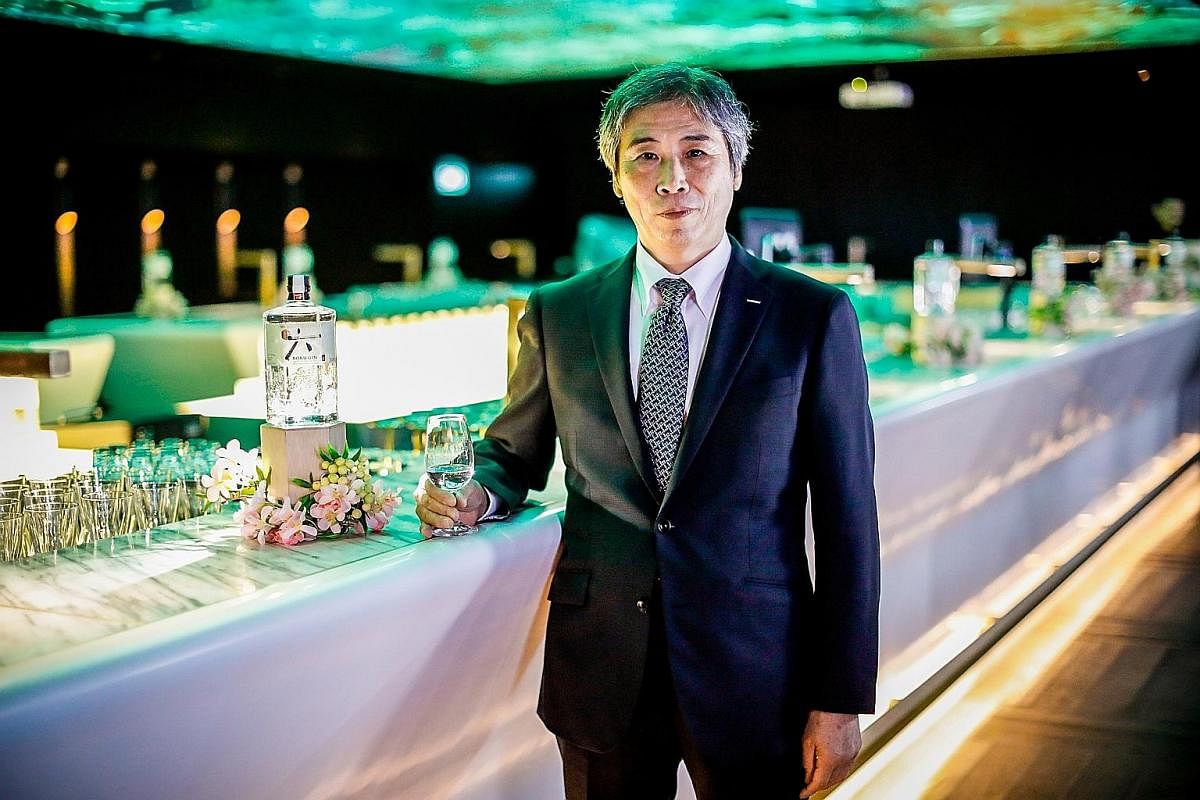Swig
A gin for all seasons
Beam Suntory's first Japanese craft gin has ingredients to reflect the four seasons

While quality Japanese whiskies continue to flourish, Beam Suntory hopes that its first Japanese craft gin, called Roku, will also make its mark.
The Japanese beverage company's senior specialist for gin and spirits, Mr Kazuyuki Torii, has hopes that Japanese gin will "also have its place in the spirits world".
The 62-year-old, who is responsible for developing the gin, was speaking to The Sunday Times on a recent visit to Singapore. It has been available here since September.
Roku, which means six in Japanese, is named for the six Japanese botanicals used in it - sakura flower, sakura leaf, yuzu peel, sencha tea, gyokuro tea and sansho pepper - along with eight other botanicals traditionally used in gin, such as juniper berries and coriander seeds.
The meticulous craftsmanship of the gin, which took two years to develop, is reflected in the selection process of the ingredients and even the way the botanicals are distilled.
Such contemporary or "new wave" gins generally place less emphasis on juniper - unlike in a London Dry Gin - and instead highlight botanicals of the region in which they are produced.
The Roku team wanted the ingredients to reflect the four seasons. Spring is represented by the sakura flower and leaf, summer by sencha and gyokuro tea, autumn by sansho pepper and winter by yuzu peel.
Mr Torii says each ingredient is harvested at the height of its flavour in accordance with a core tradition of Japanese cuisine called "shun" or selecting the best pick of the season.
For instance, the sakura flowers can be harvested only during a tight one-to two-week window in spring. "If you miss the collection, you probably have to wait till the next year," he says.
The flowers are handpicked and processed immediately by being rinsed and soaked in spirit.
With the six botanicals in the gin native to Japan, even the locations where each of them was picked were a consideration for Mr Torii and his team.
The sakura flowers come from Odawara, sakura leaves from the Izu peninsula, gyokuro tea from Kyoto, sencha from Kagoshima, sansho pepper from Wakayama and yuzu from Shikoku.
To best express each of the six botanicals, the distillation process is tailor-made, with the use of pot stills made of different materials.
For instance, with typical citrus fruit, the common citrus note usually comes to the fore at the start of the distillation. But with the yuzu - which is distilled in a copper pot still - it comes out only in the middle of the distillation process, says Mr Torii.
On the other hand, boiling the sakura flower and leaf would add a burnt aroma to the distillate. Hence they are distilled at a lower pressure and temperature in a stainless-steel pot still.
The result of these painstaking processes is a delicate gin that works best with premium, unflavoured tonic water or just on the rocks.
Beam Suntory, which now also owns English gins Sipsmith and Spanish gin Larios, felt the time was right to introduce a Japanese craft gin.
"With premium gin booming worldwide and global appreciation for Japanese culture and craftsmanship on the rise, Suntory felt that it was the right time to put its expertise behind a Japanese craft gin, which can be enjoyed by consumers around the world," says Beam Suntory international brand director Jeanette Edwards.
The 700ml bottle of Roku retails for about $90 at most bars and spirits retailers. There is also a special edition of Roku available in travel retail that features a more prominent sakura note.
Two cocktails made with Roku gin are available at $23 each at Gibson in Bukit Pasoh Road till the end of the year. Head bartender Aki Eguchi created The Miyabi, a twist on a sour, and The Matsuri, a refreshing watermelon cocktail.
Join ST's Telegram channel and get the latest breaking news delivered to you.
A version of this article appeared in the print edition of The Sunday Times on November 05, 2017, with the headline A gin for all seasons. Subscribe

